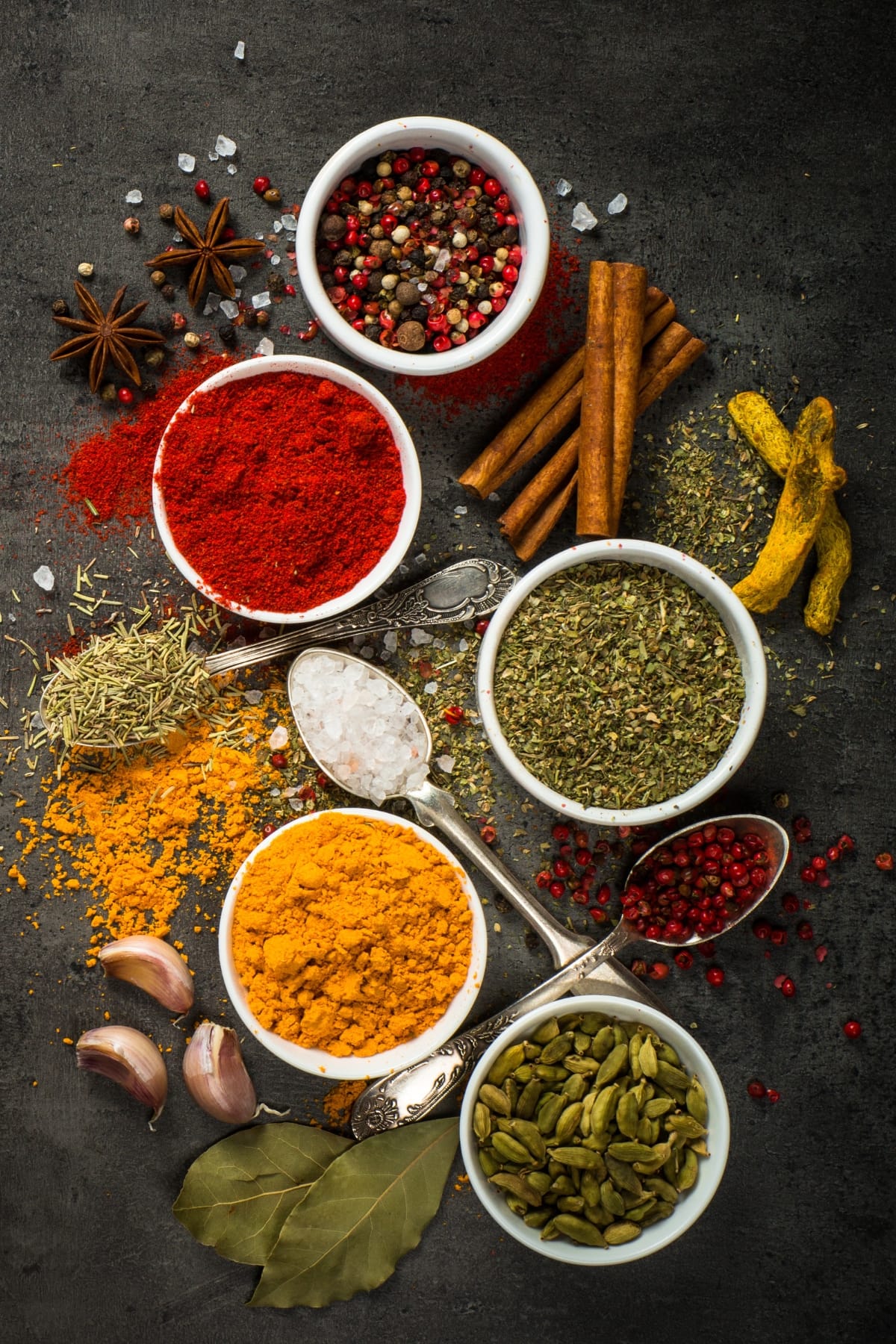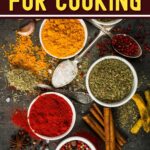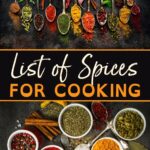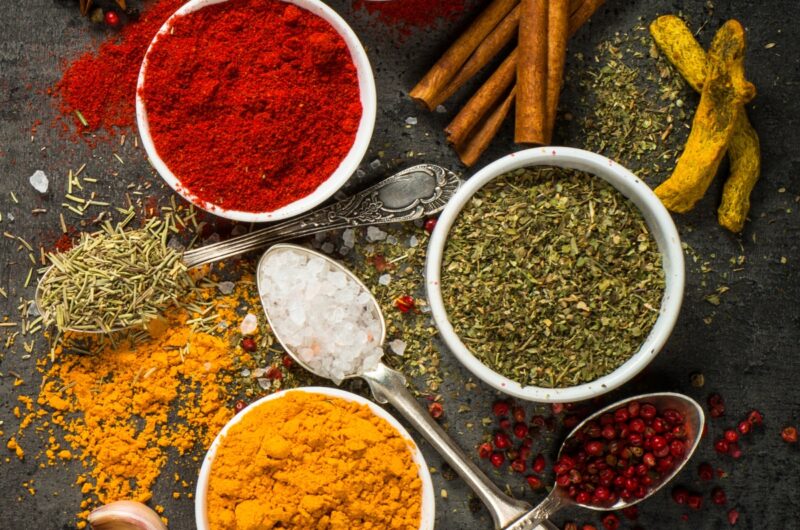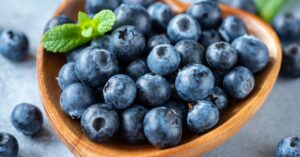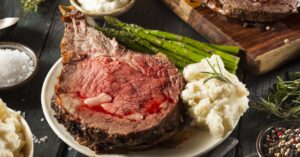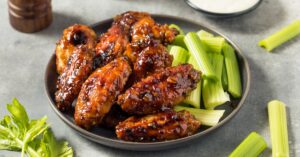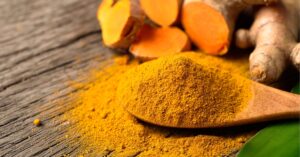Every iconic dish has a secret. Mine is an impeccable list of spices for cooking.
All home cooks know the value of a well-stocked spice rack.
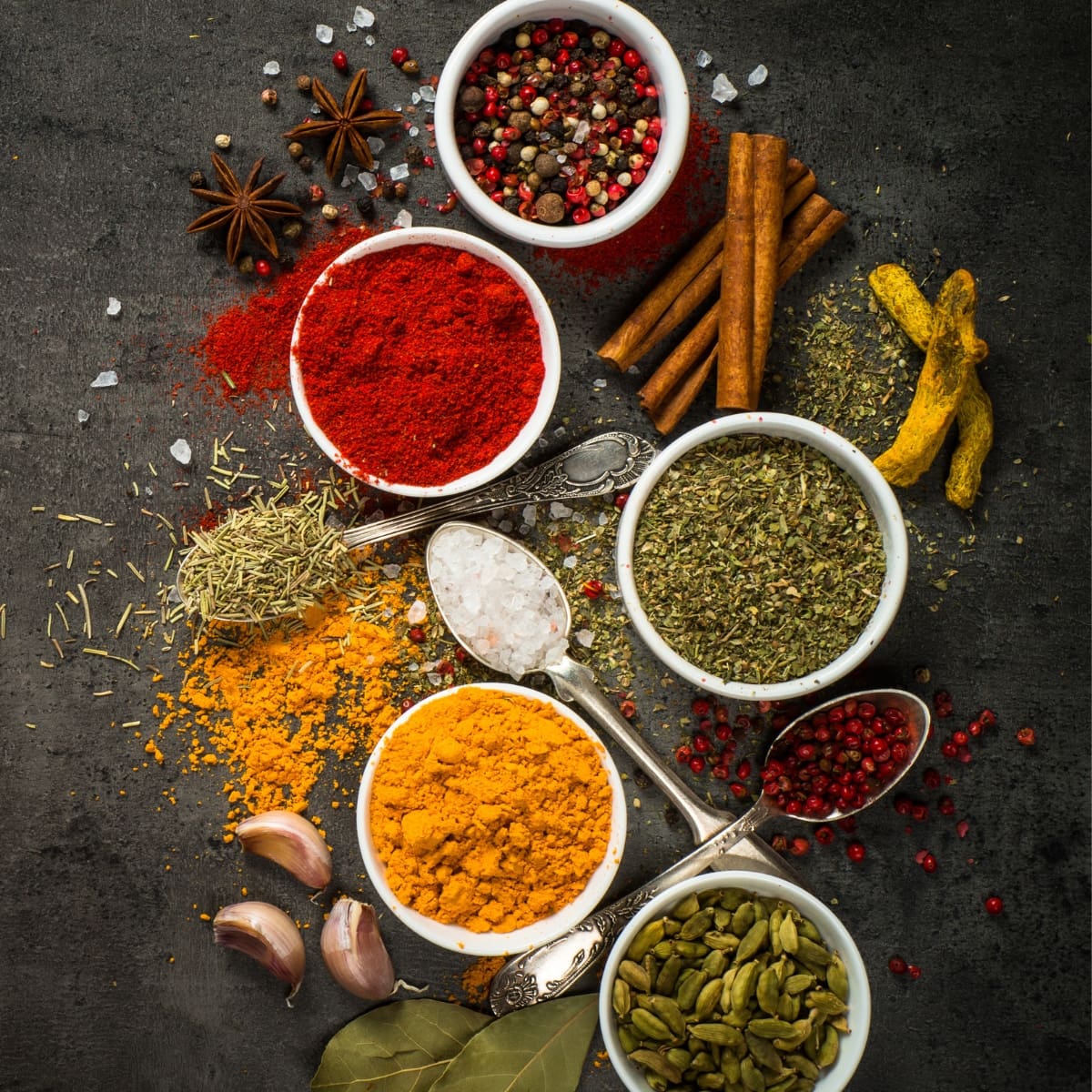
List of Essential Spices for Cooking
Spices, in their tiny jars, hold the power to transform a meal. A dash here, pinch there, and suddenly, flavors come alive like never before.
But having a plethora of spices isn’t enough. You have to know their taste profiles and how to use them.
If you want to discover each spice’s character, this list is your roadmap.
Let’s equip your culinary toolkit and elevate your dishes with this list of spices for cooking!
What Are Spices?
Spices come from various parts of plants, including seeds, fruits, and roots. You can use them in either whole or ground form. More on this later.
Historically, spices have played multiple roles. They preserved food, served as medicines, acted as dyes, and even used to make perfumes.
Today, they’re mainly used to enhance flavor and aroma in dishes. They have a similar function as herbs. The difference is herbs come from the leaves, flowers, or stems.
Whole Spices vs Ground Spices
Whole spices and ground spices are like two sides of the same coin. Let’s break it down:
Whole Spices
These are the untouched, original spices- straight from the plant. Spices are the raw, dried parts, whether seeds, bark, or fruit.
They have a stellar reputation for longevity. Stash them in your pantry, and they’ll serve you well for a while.
Some favorites in this form include cinnamon sticks, saffron strands, and classic peppercorns.
The only disadvantage is that if your recipe needs powdered, you must grind them yourself.
Ground Spices
These are a godsend, where fast-paced cooking is the norm.
Ground spices are whole spices that have already faced the grinder.
They come out the other side as a fine powder, blending effortlessly into your dishes.
And ground spices pack a punch and deliver robust flavors without needing heaps.
These are your go-to for baking, rubs, or any dish requiring an even spread of spice.
But they lose their fizz- or, in this case, potency- faster than whole spices.
How to Store Spices
While they keep well, the potency of spices is temporary. Proper storage is vital to maintaining their richness.
Here’s what you need to know to make the most of your spice collection:
- Know the shelf-life. Ground spices lose flavor within months (up to 1 year) due to increased surface area. Whole spices keep flavor for 2-4 years.
- Use opaque containers. Tuck your frequently used spices in opaque glass jars or metal tins with tight-fitting lids. This will keep them safe from pesky intruders and moisture.
- Store in a cool, dark, and dry place. This is the trifecta for storing spices. Whether it’s a drawer or a shelf, ensure it’s away from sunlight, moisture, and warmth.
- Steer clear of the stove. Heat is excellent for cooking, not for spice storage. House your spices away from cooking zones like the stove or oven.
- Freeze infrequently used spices. Did you buy spices for one recipe that you won’t make again for a while? Pop them into airtight containers and stash them in the freezer.
- Do not refrigerate. It might seem like a cool idea (pun intended) to store your spices in the fridge. But trust me, the humidity is not their friend.
- Date them. Put labels with purchase dates on your spice jars. Smell them every now and then. If they still make your nose tingle, they’re good to go.
List of Spices for Cooking
We’ve covered the basics. Now, it’s time to take a closer look at the spices.
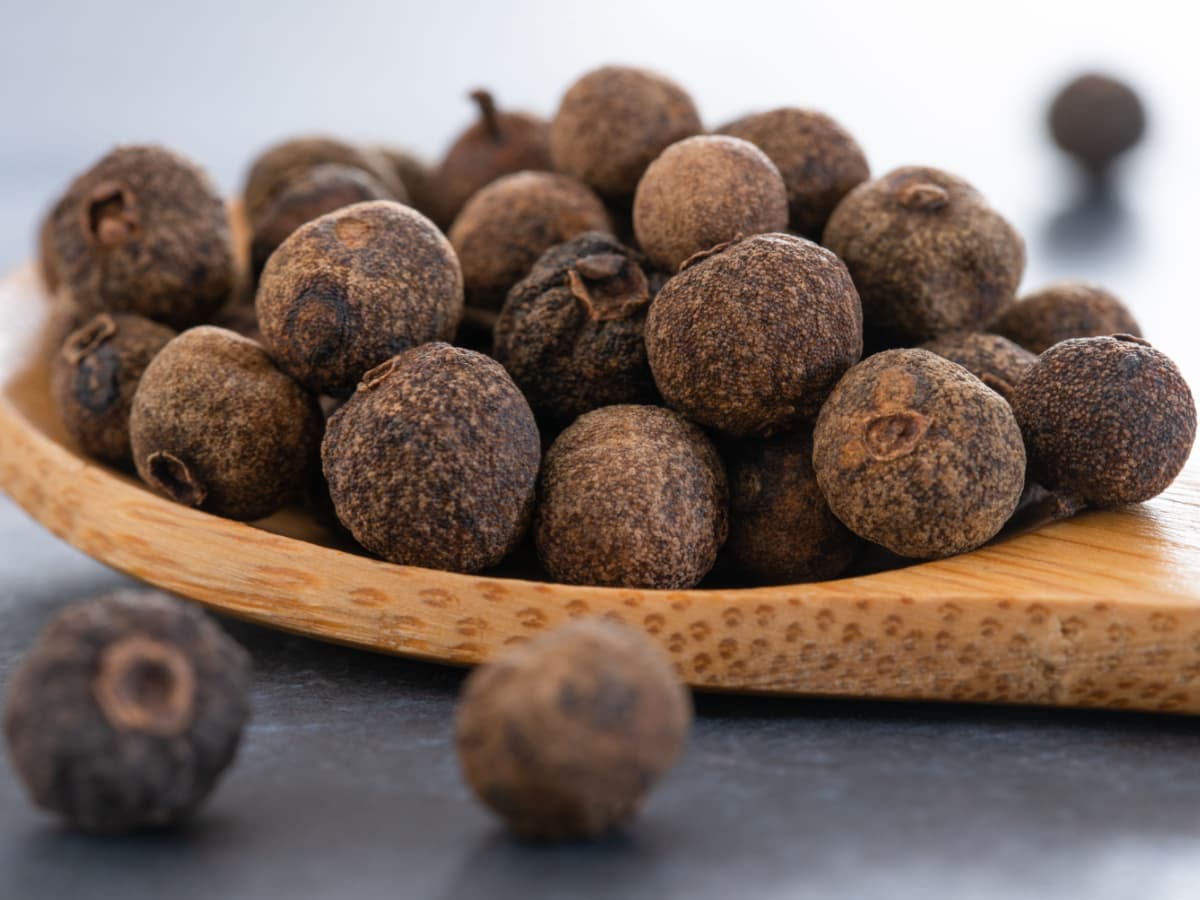
1. Allspice
Allspice is not a blend, despite its name sounding like one. It comes from the dried berry of the tropical Pimenta Dioica tree.
The spice has a unique, blended taste, though. It’s like a combination of cinnamon, nutmeg, and clove.
When to Use It: Reach for allspice in savory and sweet recipes for a warm, cozy flavor.
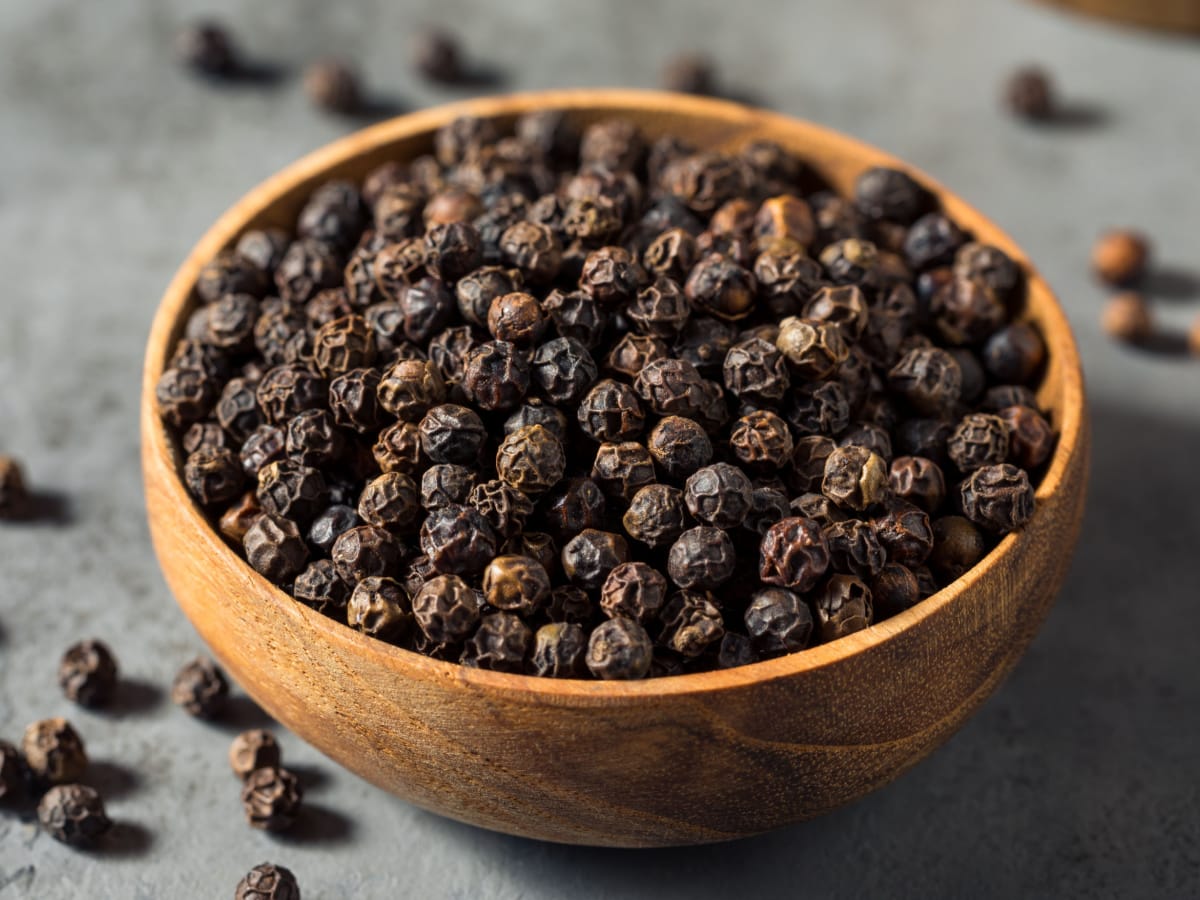
2. Black Pepper
Black pepper, a kitchen staple, adds more than just a kick.
It hails from the peppercorn of the Piper Nigrum plant. And it delivers depth with its mild heat and woodsy notes.
Whether whole or ground, its flavor is versatile and distinct.
When to Use It: Perfect for almost every dish, from roasted meats to creamy pasta for added warmth.
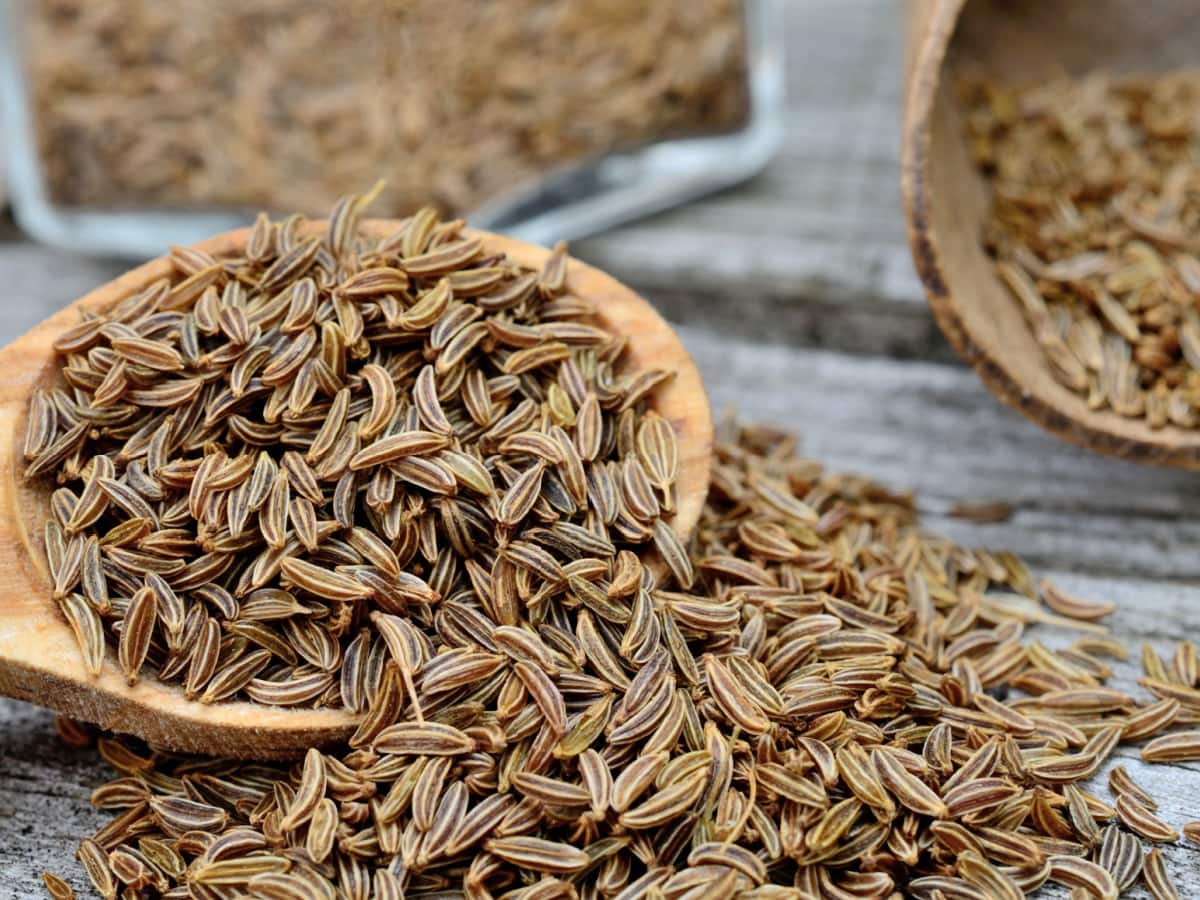
3. Caraway Seeds
Caraway seeds bring an unmistakable aroma and taste to the table.
These tiny, crescent-shaped wonders have a mix of a mild licorice hint and peppery undertones.
They’re favorites in many European dishes and traditional baked goods.
When to Use It: Sprinkle on breads, stir into soups, or blend into spice mixes for a flavor boost. Toast them to amplify their flavor.

4. Cardamom
Cardamom is a versatile spice with a hint of sweetness and minty warmth.
Hailing from the ginger family, it’s a staple in Indian and South Asian dishes.
Both the pods and the tiny seeds inside are usable. For potent flavor, use the whole pods or grind them for a subtler touch.
When to Use It: Perfect for baked goods, curries, or cozy drinks like chai for a comforting autumn warmth.
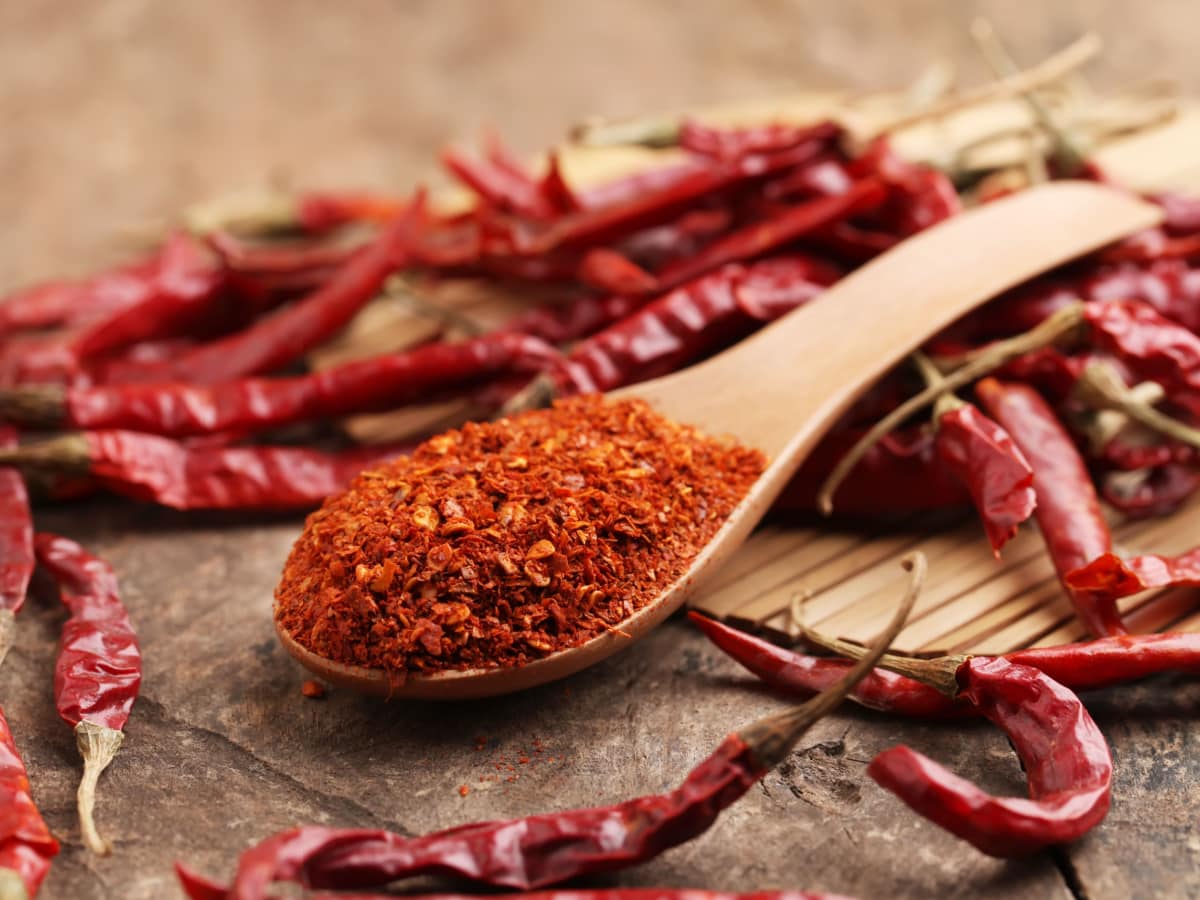
5. Cayenne Pepper
Cayenne pepper is fiery and vibrant in its red hue. It comes from the dried and ground chili of the same name.
Its punchy heat can spice up any dish. A pinch can turn the heat dial, so tread lightly if you’re sensitive to spice.
When to Use It: Great for soups, stews, and to jazz up meats or veggies. Perfect for that spicy kick!

6. Chile
Once cultivated in ancient Mexico, Chile is the world’s go-to for heat. Chiles are ground from dried peppers and bring a world of spiciness.
In fact, people consume chile more than any spice except black pepper. Their spice level can vary from mild to fiery.
When to Use It: Add to soups, stews, and sauces for heat or sprinkle on dishes for a spicy kick. Of course, it is also a vital component of chili.

7. Cinnamon
Cinnamon, the aromatic bark from cinnamon trees, isn’t just for sweets.
It elevates desserts and savory dishes with its signature warmth and spicy notes!
Available in sticks or ground form, its versatile nature complements various cuisines worldwide.
When to Use It: Perfect in baked treats, warm beverages, or to give meat dishes a unique spin.

8. Cloves
Cloves are dried, flowering buds with a distinct, spicy-sweet kick.
Their bold molasses-like flavor works wonders in various dishes, from aromatic meats to baked treats.
When to Use It: Like cinnamon and nutmeg, sprinkle cloves in baked goods or meat dishes. It is one thing that makes recipes with Chinese 5 Spice so good!

9. Coriander
Coriander is a bit of a two-in-one plant.
In many parts of the world, the leaves and the seeds of the plant are both called “coriander.”
However, they call the leaves cilantro in Spain, Latin America, and the U.S. The seeds keep the name coriander.
These yellow-brown seeds and the green, feathery leaves have distinct flavors.
Cilantro leaves have a fresh, herby taste. Unless you have the OR26A gene. In that case, it tastes like soap.
The coriander seeds are floral and crisp. And they offer a citrusy brightness to dishes.
When to Use It: Coriander is an excellent addition to curries, stews, marinades, and baked goods. For a flavor boost, toast them slightly before use.
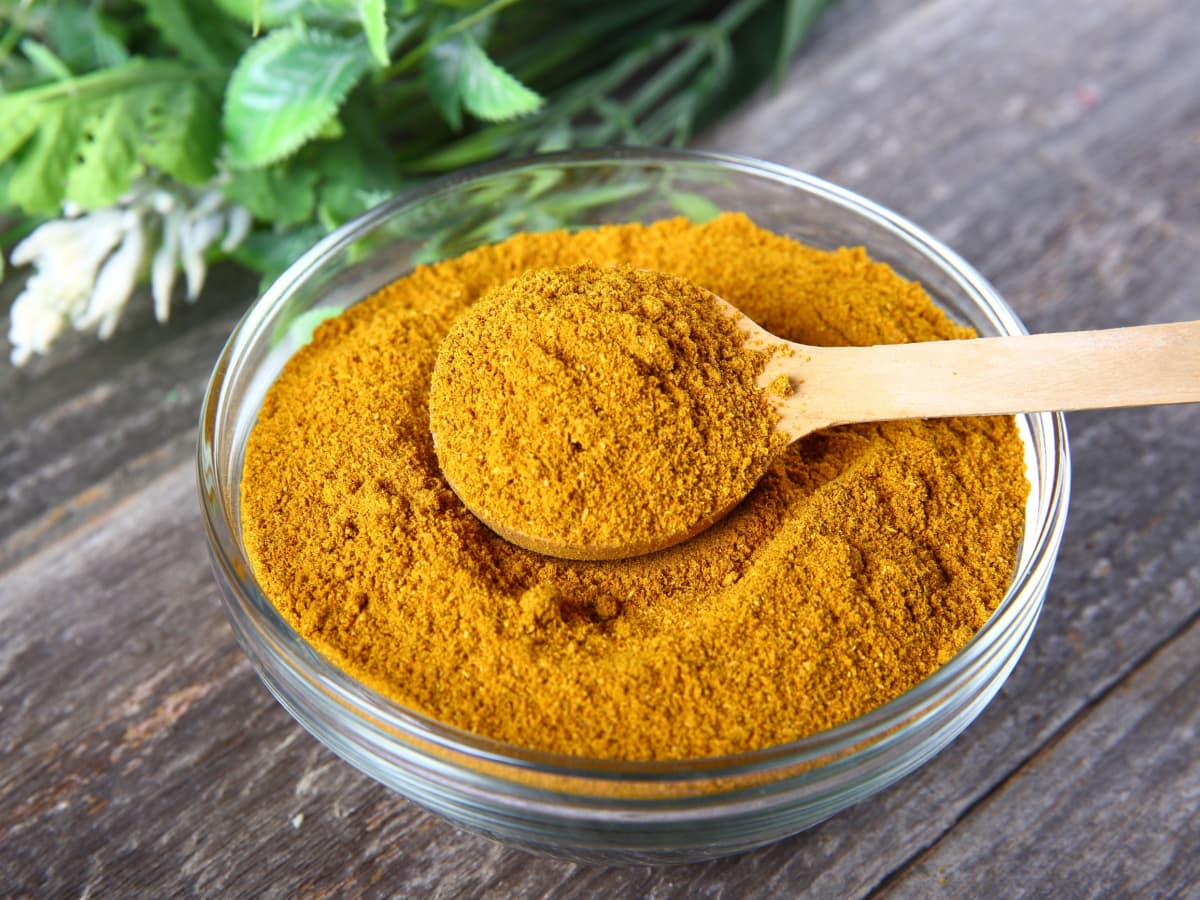
10. Curry Powder
Curry powder is not a single spice but a blend of many.
It combines warm, earthy flavors, and its color ranges from yellow to brown.
Key components usually include turmeric (giving it that iconic yellow hue), cumin, coriander, and chili peppers.
It may have ginger, garlic, fenugreek, cinnamon, and more.
When to Use It: Curry powder adds a complex flavor profile to any dish, from stews and soups to marinades. It shines especially in meat and vegetable curries.
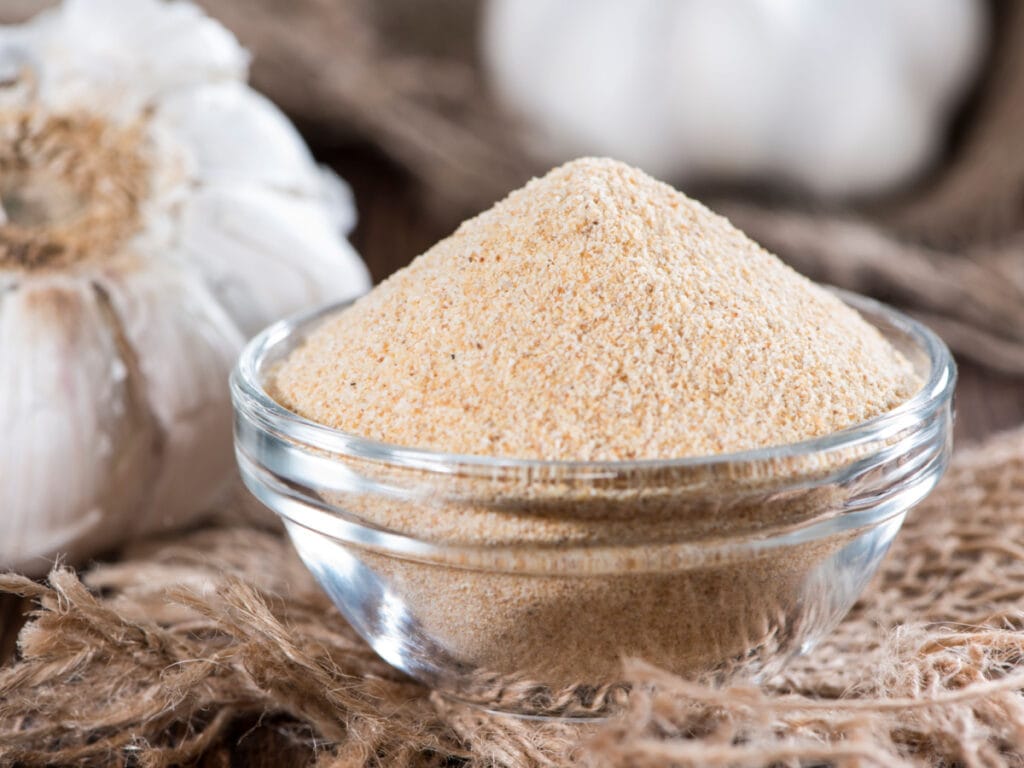
11. Garlic Powder
Garlic powder is made by drying and grinding fresh garlic cloves.
It packs a milder punch than fresh garlic. It delivers that familiar garlic essence without moisture or bite of fresh garlic.
When to Use It: Garlic powder is excellent in spice mixes, dry rubs, or any dish for a consistent garlic flavor. Perfect for dressings and marinades.

12. Ginger
Ginger is the knobbly root of the Zingiber Officinale plant, originating from Southeast Asia.
It has a spicy, warm flavor that becomes sweeter when cooked. The spicy kick comes from gingerol, which turns milder and sweeter when dried or heated.
Fresh, dried, or ground, its versatile taste complements sweet and savory dishes. It can even be candied- which makes for some delicious recipes.
When to Use It: Ginger shines in stir-fries, soups, teas, and baked goods. Add it for a warm, spicy touch, especially in Asian dishes or classic gingerbread cookies.
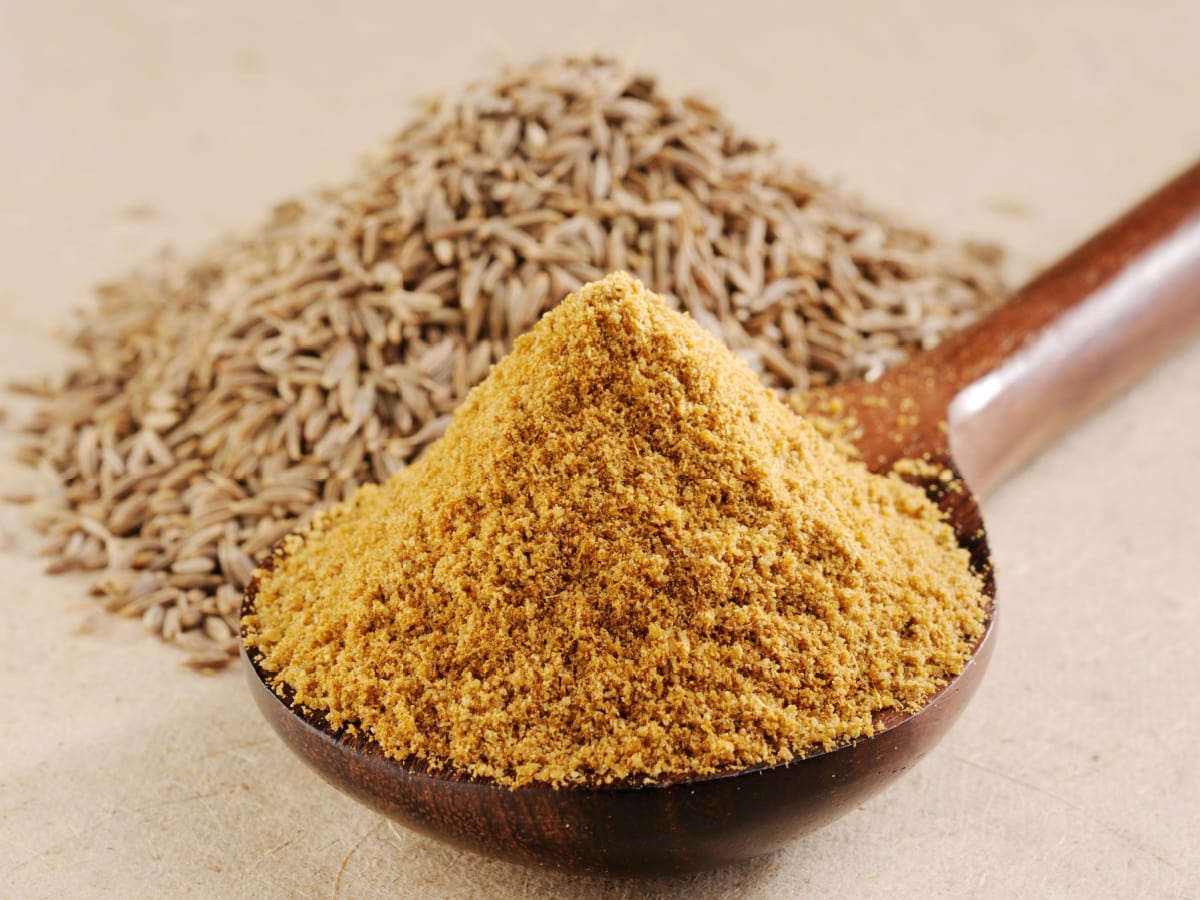
13. Ground Cumin
Ground cumin is the powdered form of seeds from a plant in the parsley family.
Cumin comes from the East Mediterranean to South Asia. Its flavor is earthy with a subtle smoky edge and subtle sweetness.
It’s recognizable in many global dishes, giving depth and warmth to the profile.
When to Use It: Perfect for Tex-Mex recipes, curries, stews, and meat rubs. Mix it in for an aromatic, warm spice kick.
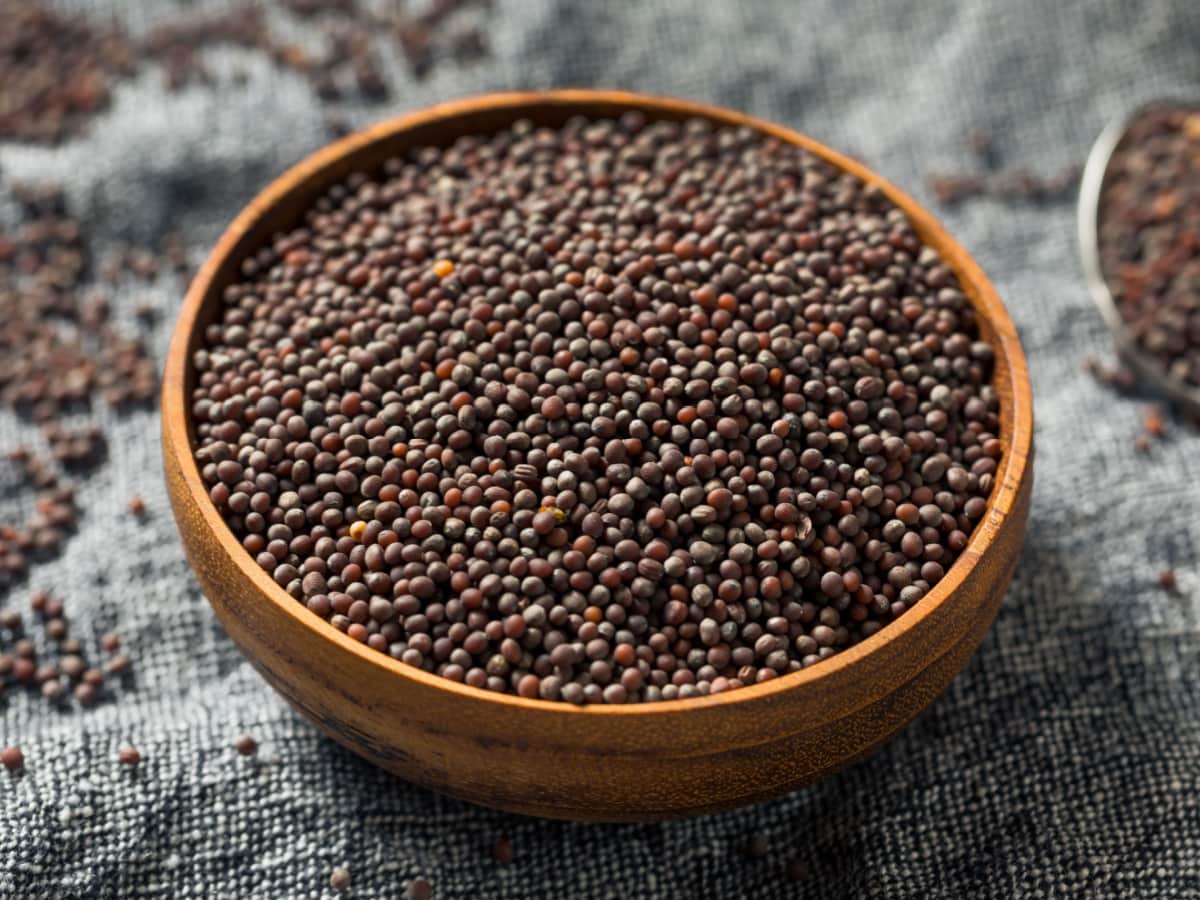
14. Mustard Seed
Mustard seeds have a piquant kick, similar to horseradish, especially when heated.
They’re a common choice to flavor pickles, dressings, and spicy concoctions.
They come in yellow, brown, and the sharper black variety. Brown and black seeds pack more punch than their yellow counterparts.
When to Use It: Sprinkle on meat rubs, infuse in oils, or pop in curries for a zesty twist.

15. Nutmeg
Nutmeg hails from the seed of the Myristica Fragrans tree, native to Indonesia.
This seed hides inside a protective shell. Open it, and you’ll find a bright red aril. This aril, when dried, gives us mace. But inside the aril is the nutmeg seed.
While both spices have warm and aromatic profiles, mace carries a more refined, spicier punch.
Nutmeg offers a subtle sweetness with hints of nuttiness and warmth.
When to Use It: Nutmeg is perfect for desserts, hot beverages, and roasted dishes. It’s especially apt for cozy fall recipes, pairing well with spices like cinnamon and cardamom.
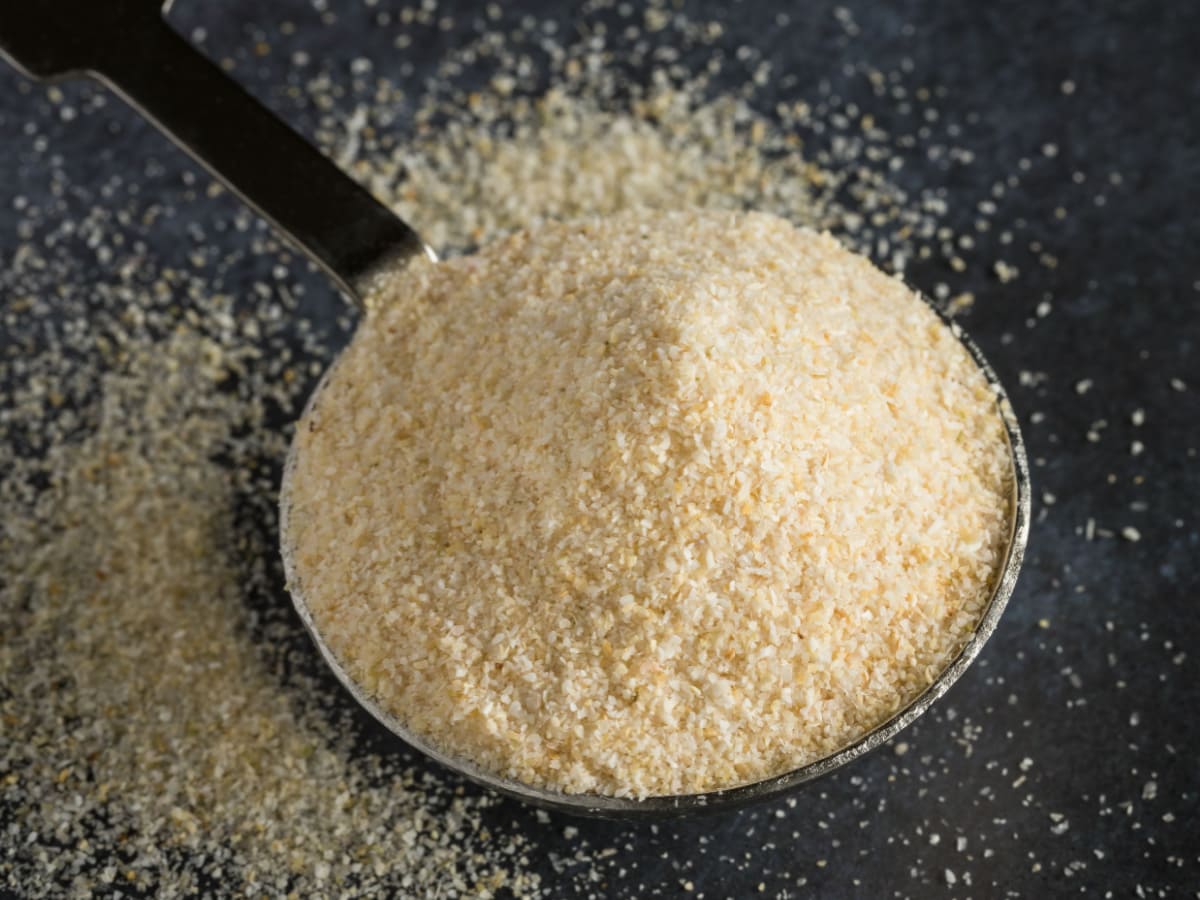
16. Onion Powder
Onion powder captures the essence of onions but in a potent, ready-to-use form.
The white powder results from dehydrating and finely grinding fresh onions.
It provides dishes with a deep, savory undertone without the moisture or texture of its fresh counterpart.
When to Use It: Ideal for enhancing sauces, gravies, or marinades. Also, it’s a staple in many spice blends and dry rubs, giving a robust, oniony kick.

17. Oregano
Oregano is often associated with Mediterranean and Mexican cuisines.
The dried form, often found in markets, carries a distinct piney and slightly lemony scent.
When to Use It: Beyond its iconic role on pizza, oregano is also perfect for slow-roasted veggies, grilled meats, and Tex-Mex dishes.
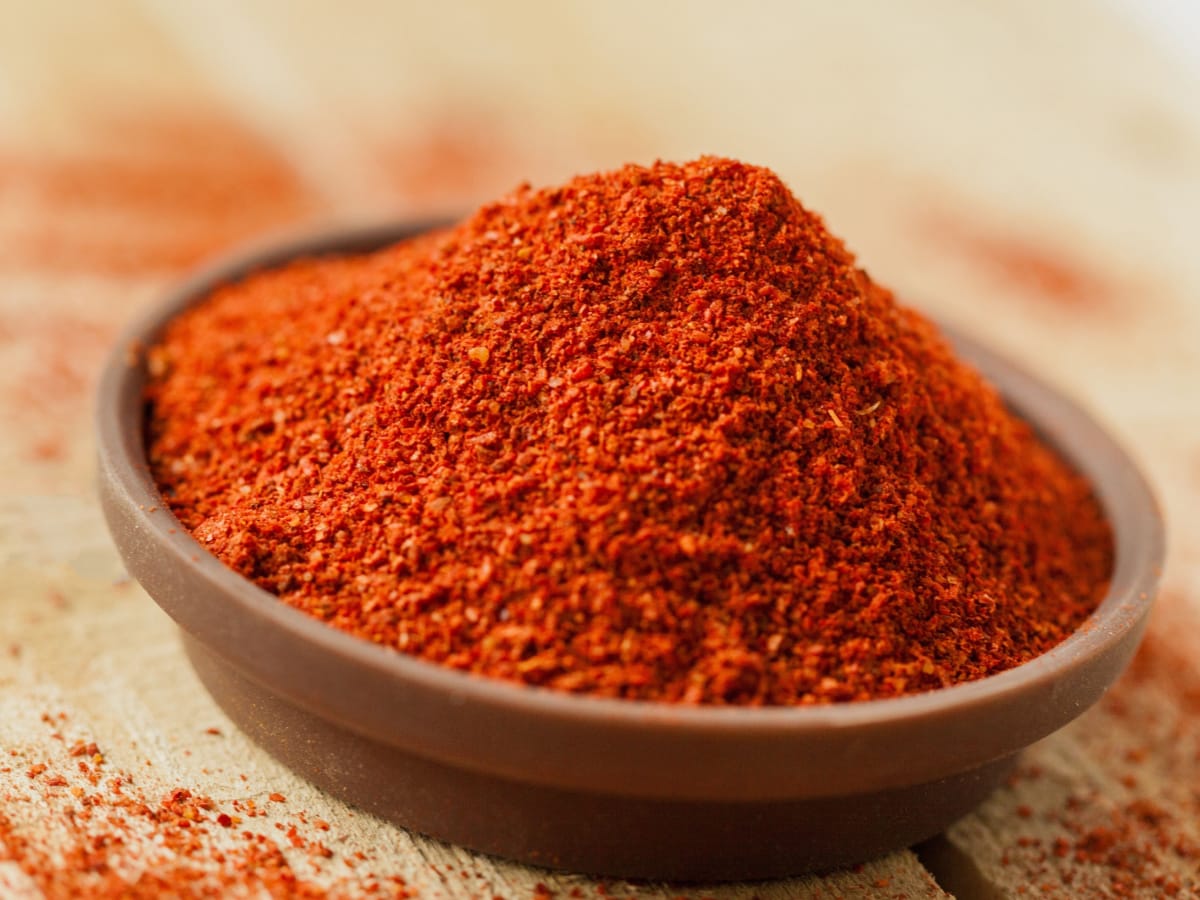
18. Paprika
Paprika comes from dried red peppers. It brings vibrant red hues and a flavorful punch to dishes.
Regular paprika offers a mild heat with a touch of sweetness. The smoked version undergoes a unique drying process over a fire, giving it a bolder, spicier profile.
When to Use It: Perfect for meats, sauces, and robust sides. For those smoky BBQ vibes or a flavor kick, turn to smoked paprika.
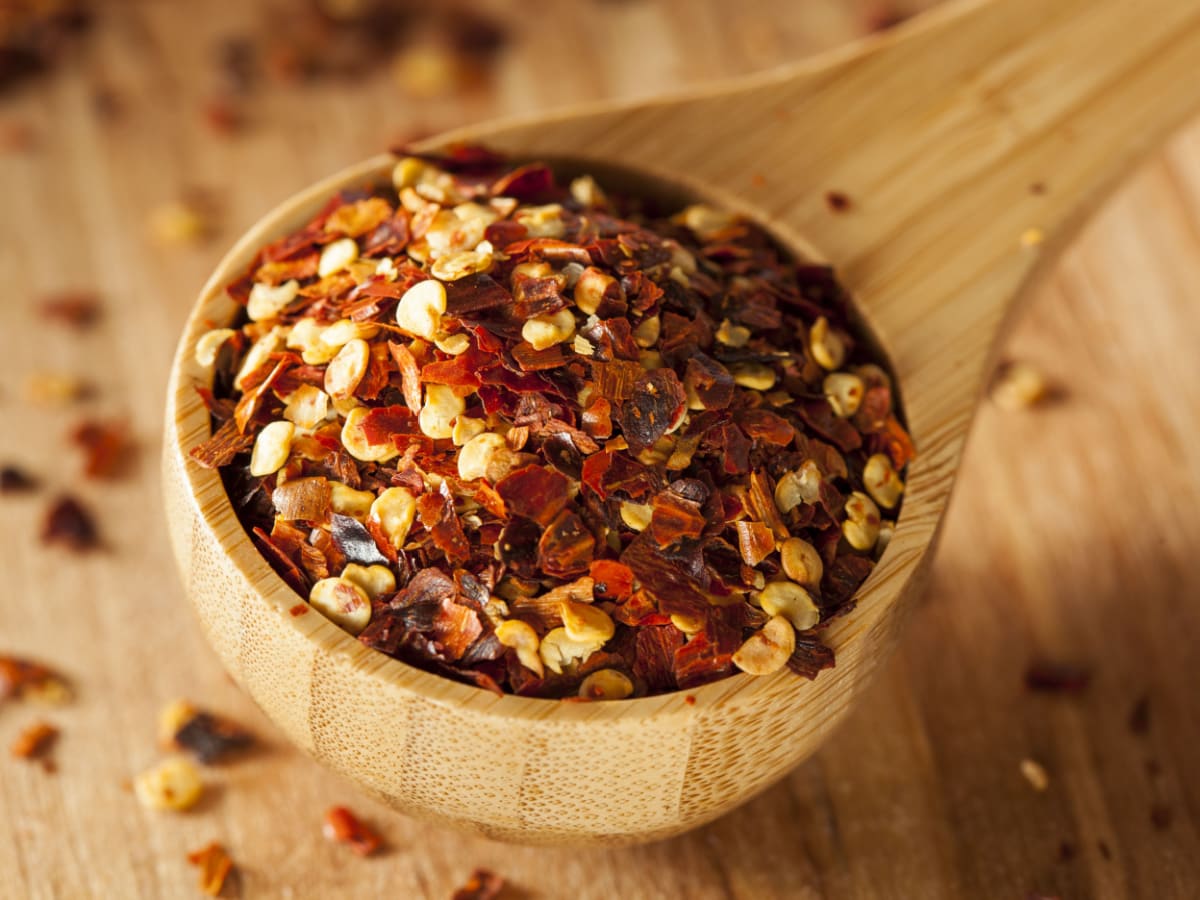
19. Red Pepper Flakes
Red pepper flakes are crushed, dried mixtures of peppers like cayenne and bell.
They bring consistent, well-rounded heat to dishes without overshadowing original flavors.
They are versatile, enhancing everything from Italian pizzas to Thai curries.
When to Use It: Infuse warmth in meals during cooking or as a finishing touch. Sprinkle on pizzas, pasta, or any dish needing heat.

20. Rosemary
While technically an herb, I believe rosemary also deserves a mention!
Rosemary is a fragrant herb with a robust flavor that livens up dishes.
Fresh rosemary sports soft, flexible leaves, ideal for chopping and blending into recipes. In contrast, dried rosemary has an even richer taste.
When to Use It: Enhances roasts, marinades, and grilled dishes. Fresh sprigs work in stews, while stems can double as skewers or basting tools.

21. Saffron
Saffron is a vivid red spice derived from the stigma of a crocus flower.
Once dried, it delivers a distinct taste: a blend of sweet, floral, and earthy notes.
Saffron is a premium spice. It doesn’t really come in powdered form, only whole. And it can be expensive.
The spice itself is red. But as it cooks, it leaves a beautiful, golden yellow hue on your food.
Saffron’s potent flavor and bright hue elevate dishes. They make them both visually and gastronomically appealing.
When to Use It: It’s predominantly used in Middle-Eastern, North African, and South Asian dishes. Apart from savory, it also fits well in desserts.
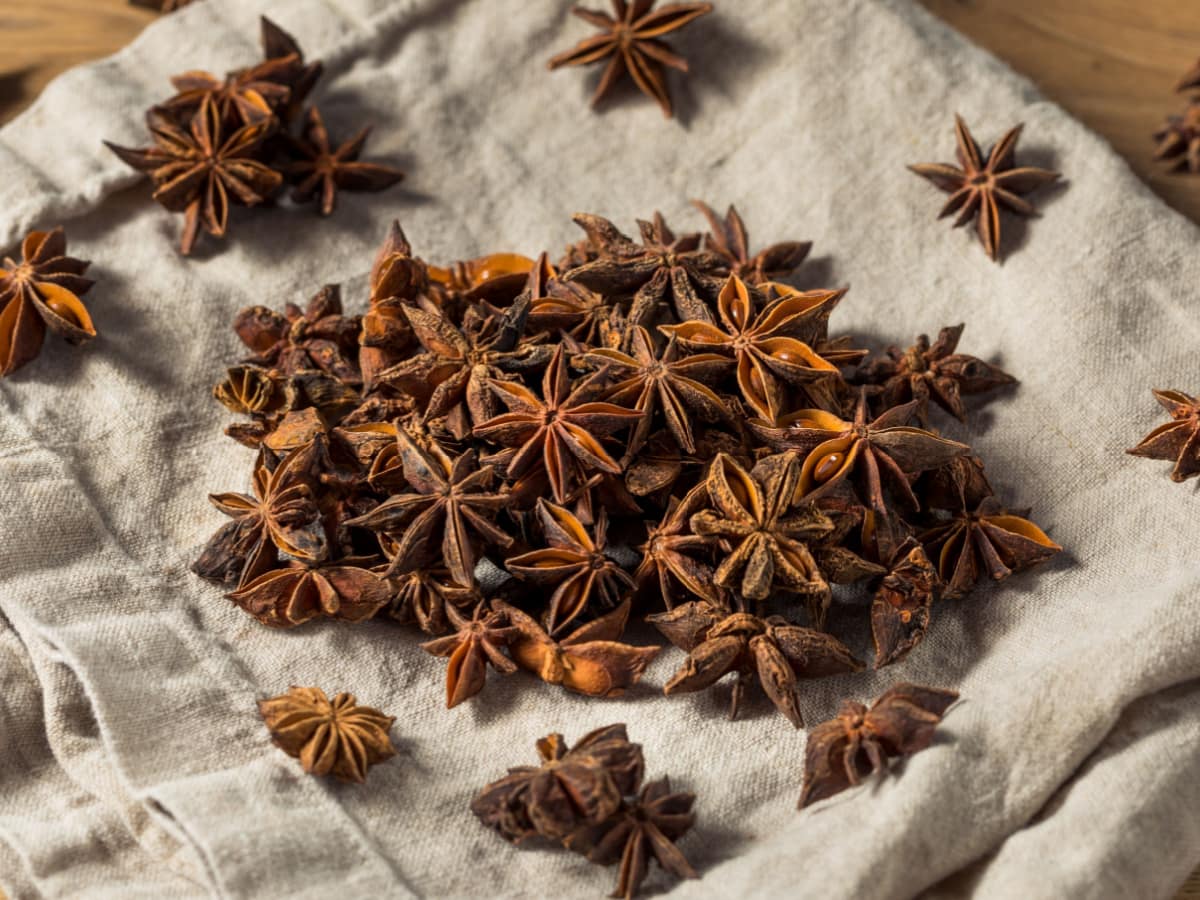
22. Star Anise
Star anise is a star-shaped, brown spice harvested from an evergreen tree. Its seed pod and inner seeds are both flavorful.
This spice packs a licorice-like sweetness, and its seeds are very aromatic.
Don’t confuse it with aniseed, even if they share flavor similarities.
When to Use It: Include it in baked treats and pastries. It is also delicious in savory dishes.

23. Thyme
Thyme is yet another herb sometimes confused for a spice.
It’s related to the mint and oregano family, popular in Mediterranean and Southern European cooking.
Thyme offers a piney, herbal kick to dishes. There’s also lemon thyme, which has a hint of citrus.
When to Use It: Great in refreshing dishes like ice pops or enhancing main courses like grilled chicken.

24. Turmeric
Turmeric is a vibrant golden-yellow spice, typically found in its powdered form.
It’s a cousin of ginger, offering a distinct earthy and aromatic taste, although they taste different.
The flavor is a mix of pepper and mustard.
When to Use It: Ideal for infusing an earthy flavor in dishes, especially in Middle-Eastern and South Asian recipes.

25. Vanilla
Vanilla comes from a long black pod that houses tiny seeds.
This spice is a favorite in desserts and baked treats. Its aroma and flavor are rich and sweet.
You can use the whole pod. But many opt for the convenient extract.
When to Use It: Perfect for imparting a rich sweetness in desserts and other sweet dishes.


